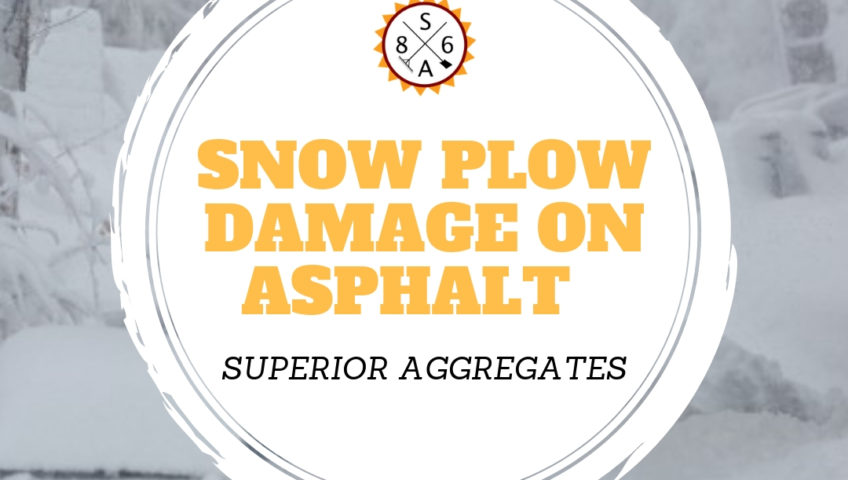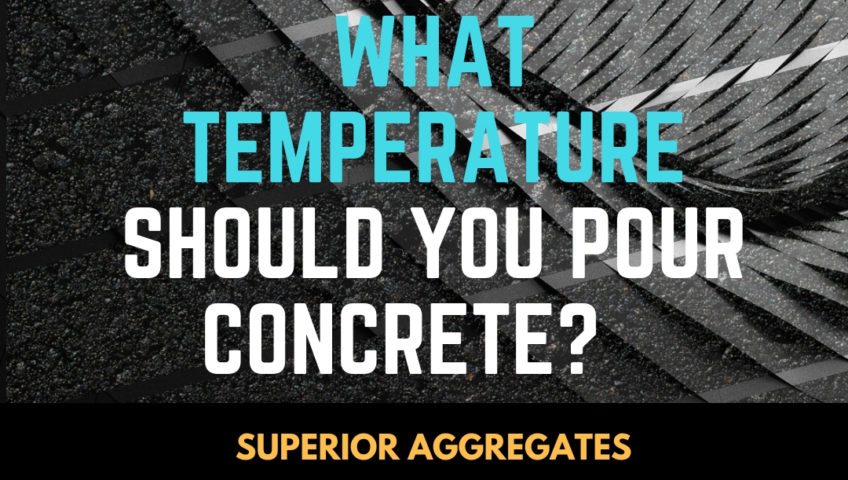
Snow Plow Damage on Asphalt
Living and working in the Snow Belt means having to deal with snow removal yourself, or hiring professional help. Snow piles up fast, therefore, you snow removal solution should be just as effective. This is especially important for businesses as snow piling on roadways, sidewalks, and parking lots mean lost revenues as customers are unable to access the business.
However, companies should consider the negative implications of the snow removal methods they select. These negative implications include liabilities arising from snow removal and safety concerns. The use of snow plows, in particular, may cause damage to sidewalks, roadways and parking lots. Companies should, therefore, have this in mind when they prepare annual budgets. Provisions should be made for the repair of damaged infrastructure. This provision should be made when budgeting for winter expenses and expenditure (which will include the costs of snow removal).
Companies can also be proactive and take steps towards preventing damage to infrastructure during the winter from snow plowing. These steps include;
- Filling and Sealing Cracks – Before the winter months roll in it will be prudent if an inspection of the infrastructure around you is carried out. This means the parking lot, driveways and sidewalks. Any cracks should be identified and filled. This will prevent the intrusion of water which periodically freezes and thaws during winter making infrastructure more susceptible to damage due to water’s expansion and contraction.
- Protect from Snow Plows – Again before winter begins to make sure the parking lot, sidewalk or driveway is clear of any objects such as dirt, litter or rocks. These objects can crack the asphalt when run over by a snow plow. Place visible markers at curbs to protect sidewalks and driveways.
- Shovel often and correctly – Shoveling as soon as it snows minimizes the amount of snow and water on your parking lot at any given moment thus reducing the probability of damage from water thawing and freezing. Ensure the shovel you use does not damage your parking lot, select a shovel that is not sharp.
- Check Your De-Icer – Carefully select the de-icing agents you will use. Some agents such as rock salt can damage cement and asphalt. Using milder agents is recommended.
- Repair Potholes – Ensure any potholes detected during winter in your parking lot are repaired promptly. Asphalt can be repaired at a fraction of the cost of traditional repairs using infrared asphalt repairs.
Budgeting for snow removal
Damage from snow plows usually occurs from the scraping of the asphalt by a blade set too low. The scraping action can strip off pavement sealer. Therefore, sealer applications should be included in the budget in order to restore the asphalt once the snow and ice clear.
Quality Snow Removal Solution Investments
The most important investments needed during winter for snow removal will be in personnel and materials. The personnel hired to perform snow removal should be experienced and/or from reputable companies with the know how to minimize damage to infrastructure. Hiring experienced drivers should be a priority. In terms of materials, you will require to invest in suitable de-icing agents and visible markers to guide drivers on where to plow and where not to plow.
Winter is coming. The snow and ice should not surprise you this season. Developing a plan for the prevention of damage and postseason restoration will go a long way towards minimizing costs associated with snow plow damage. Do not wait until you have to replace the whole pavement, instead undertake frequent repairs and maintenance. This will result in significant cost saving in the long run.
Living and working in the Snow Belt means having to deal with snow removal yourself, or hiring professional help. Snow piles up fast, therefore, you snow removal solution should be just as effective. This is especially important for businesses as snow piling on roadways, sidewalks, and parking lots mean lost revenues as customers are unable to access the business.
However, companies should consider the negative implications of the snow removal methods they select. These negative implications include liabilities arising from snow removal and safety concerns. The use of snow plows, in particular, may cause damage to sidewalks, roadways and parking lots. Companies should, therefore, have this in mind when they prepare annual budgets. Provisions should be made for the repair of damaged infrastructure. This provision should be made when budgeting for winter expenses and expenditure (which will include the costs of snow removal).
Companies can also be proactive and take steps towards preventing damage to infrastructure during the winter from snow plowing. These steps include;
- Filling and Sealing Cracks – Before the winter months roll in it will be prudent if an inspection of the infrastructure around you is carried out. This means the parking lot, driveways and sidewalks. Any cracks should be identified and filled. This will prevent the intrusion of water which periodically freezes and thaws during winter making infrastructure more susceptible to damage due to water’s expansion and contraction.
- Protect from Snow Plows – Again before winter begins to make sure the parking lot, sidewalk or driveway is clear of any objects such as dirt, litter or rocks. These objects can crack the asphalt when run over by a snow plow. Place visible markers at curbs to protect sidewalks and driveways.
- Shovel often and correctly – Shoveling as soon as it snows minimizes the amount of snow and water on your parking lot at any given moment thus reducing the probability of damage from water thawing and freezing. Ensure the shovel you use does not damage your parking lot, select a shovel that is not sharp.
- Check Your De-Icer – Carefully select the de-icing agents you will use. Some agents such as rock salt can damage cement and asphalt. Using milder agents is recommended.
- Repair Potholes – Ensure any potholes detected during winter in your parking lot are repaired promptly. Asphalt can be repaired at a fraction of the cost of traditional repairs using infrared asphalt repairs.
Budgeting for snow removal
Damage from snow plows usually occurs from the scraping of the asphalt by a blade set too low. The scraping action can strip off pavement sealer. Therefore, sealer applications should be included in the budget in order to restore the asphalt once the snow and ice clear.
Quality Snow Removal Solution Investments
The most important investments needed during winter for snow removal will be in personnel and materials. The personnel hired to perform snow removal should be experienced and/or from reputable companies with the know how to minimize damage to infrastructure. Hiring experienced drivers should be a priority. In terms of materials, you will require to invest in suitable de-icing agents and visible markers to guide drivers on where to plow and where not to plow.
Winter is coming. The snow and ice should not surprise you this season. Developing a plan for the prevention of damage and postseason restoration will go a long way towards minimizing costs associated with snow plow damage. Do not wait until you have to replace the whole pavement, instead undertake frequent repairs and maintenance. This will result in significant cost saving in the long run.

